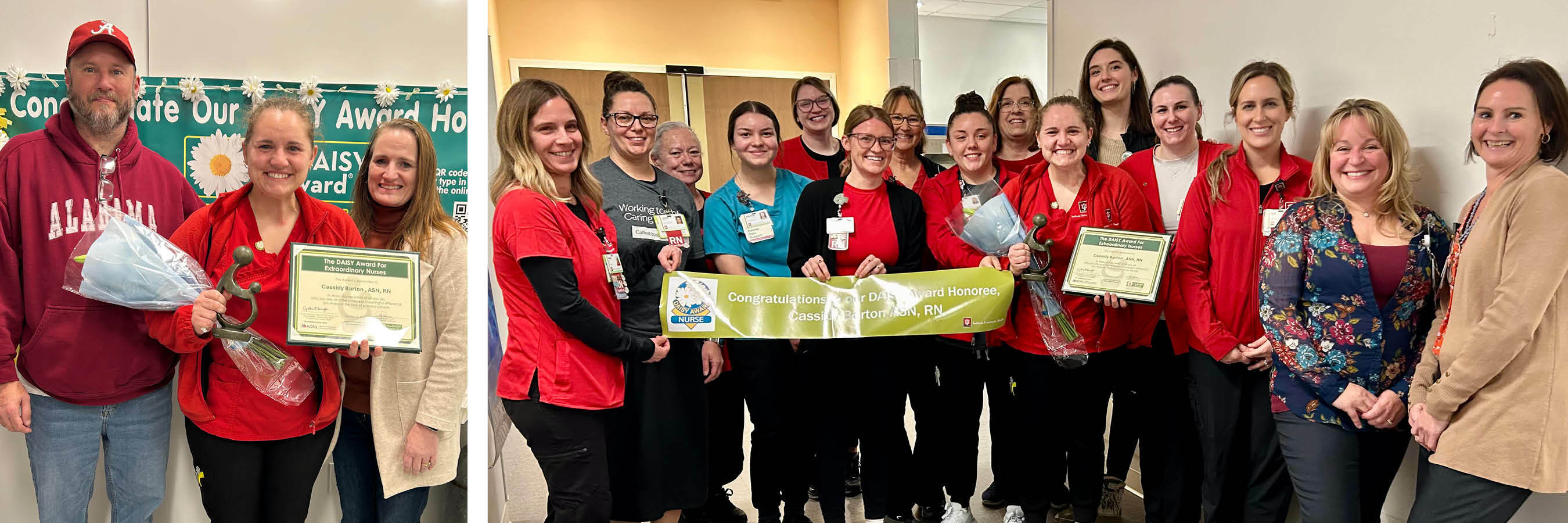By Emma Avila, epackard1@iuhealth.org, writer for IU Health’s Indianapolis Suburban Region
Siblings Brittany Fields and Dr. Kyle Mackey, MD, share their journey working together on the Maternity team at IU Health West, where their close bond enhances their approach in providing care for patients.
At IU Health West, many team members say the hospital feels like a family. For Brittany Fields and Dr. Kyle Mackey, MD, that sentiment is quite literally true.
Fields, who works in nursing professional development for the hospital’s Maternity services, began working at IU Health West in 2012. Her younger brother and OB/GYN, Dr. Mackey, joined the Maternity team as well last year.
“I think we had always kind of joked about it,” Mackey says. “When the time came, I knew my wife and I wanted to get back to this area. Then, looking at things, what was important to me in a practice and hospital, this seemed to check all the boxes. Of course, having Brittany here was a big plus.”
Though the siblings work on the same unit, their journeys have been different.
Fields started as a unit secretary. She was offered a position in Obstetrics, which she thought would be a fun experience. She is now a registered nurse and helps other nurses learn different skills.
“This is my passion,” she says. “It’s been one of the best decisions I ever made.”
For Dr. Mackey, his sister did not influence his choice to become an OB/GYN. In fact, he was originally interested in Orthopedics. It all came down to his experience in medical school.
“I had absolutely zero interest in OB/GYN going into my first and second years of medical school,” he says with a laugh. “That was up until by OB rotation in my third year. I had a great experience with the attending I was working with. I loved it. I loved that it was busy. I loved that it was surgical. I loved that, for the majority, you are there for the best moments of someone’s life.”
Once Dr. Mackey made the decision to come to IU Health West, he had his sister to help him ease into the new role.
“Once he was getting ready to start, he came in, I gave him a tour and we went over his preference cards for procedures,” she says. “I was very proud to show him the unit and everything.”
Now, working on the same unit, Fields and Dr. Mackey see each almost every day.
“Sometimes I may just walk by her office to see if she’s there,” Dr. Mackey says.
“We eat lunch at least once a week together, which is really fun,” Fields adds.
The two have always been close with each other as well as their middle sibling, another sister. Dr. Mackey believes his relationships with his sisters, mother and grandmother have informed how he cares for patients.

“I think that just being around and being so close with the women of my life, every time I see a patient, I think of what I would do for my wife, my mother, my sister, my grandmother,” he says.
Fields sees those influences in how Dr. Mackey interacts with the team as well.
“He is very good at communicating and talking, especially with nurses,” she says. “He’s very shoulder to shoulder with us. It’s never, ‘I’m a doctor. You’re a nurse.’ There’s a lot of really good collaboration.”
Felds has occasionally assisted on procedures with Dr. Mackey. He finds it comforting to have his big sister in the room.
“I know that if she’s in my room, it will be fine. There’s definitely a sense of ease,” he says.
For Fields, she experiences pride when she sees a member of her family help patients grow their families.
“It’s just so nice to see him up here. I’m super proud of him. He’s worked so hard,” she says. “It’s nice to see him in this role and thriving. I’m just a proud big sister.”



